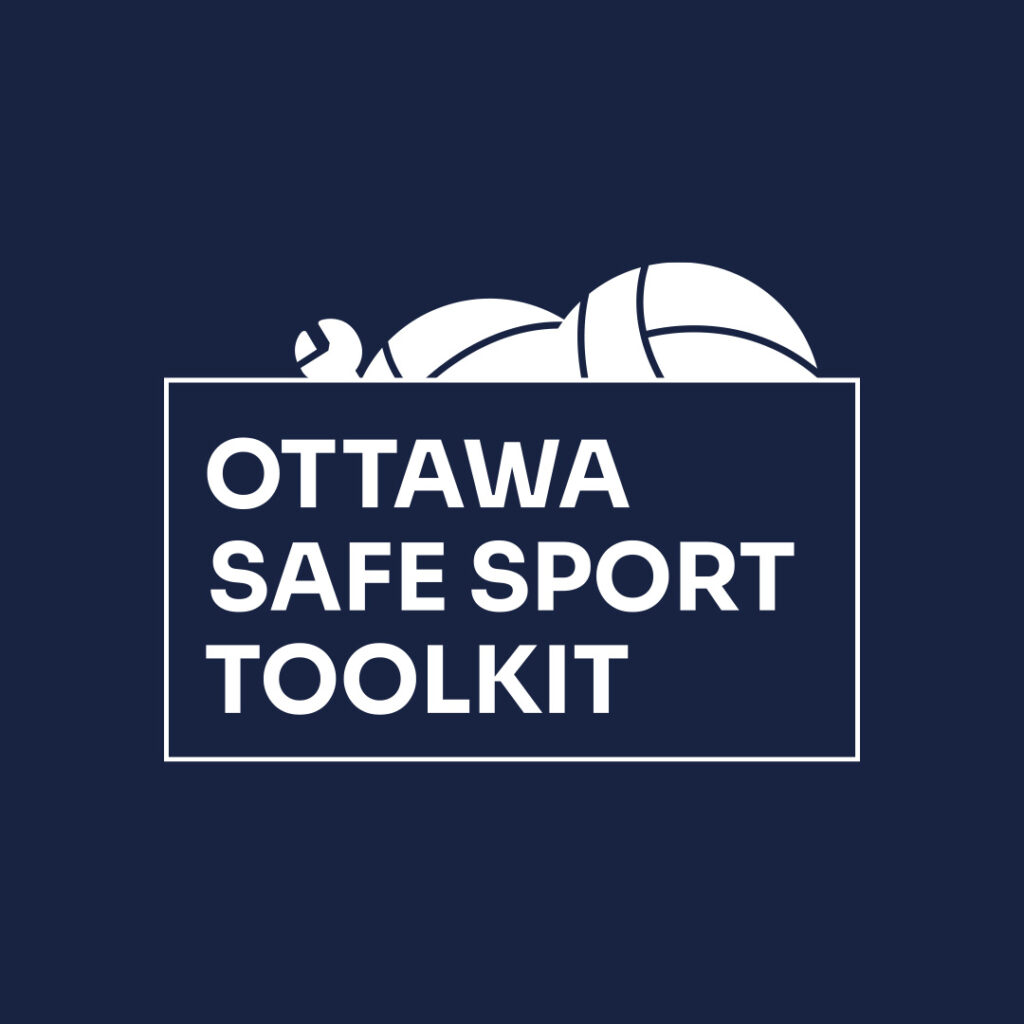
Earlier this month, we launched the Ottawa Safe Sport Toolkit. The Ottawa Safe Sport Toolkit is a free online toolkit developed to foster safe, welcoming, and inclusive sport environments for participants of all ages and abilities. Based on industry best practices, the Ottawa Safe Sport Toolkit (OSST) was developed collaboratively with 12 Ottawa based member sport organizations through a pilot program.
The development of this toolkit began in November of 2020 with the goal of increasing program safety and inclusiveness and ensuring safe sport resources reach the community level. We have seen so much conversation in the media recently surrounding safe sport concerns, prompting the Minister of Sport to announce that the implementation of the Sport Dispute Resolution Centre of Canada (SDRCC) independent safe sport mechanism would be accelerated and that it would be mandatory for all national sport organizations that receive federal funding (see full statement here).
While this is an important step in increasing program safety and ensuring safe sport, this does not mean that resources will reach the community level as quickly. Therein lies the importance of the Ottawa Safe Sport Toolkit. The resources developed for the OSST have been custom designed to best suit community level sport.
How does the Ottawa Safe Sport Toolkit work?
The toolkit is organized into four components and comes with a complete Implementation Guide to support community sport organizations. By following the four components of the toolkit in order, community sport organizations will have the policies and the culture necessary to increase program safety. The four components include:
- Policies
Policies are critical to ensure community sport organizations are protected and are protecting their members. This section of the toolkit includes the Safe Sport Policy Suite (SSPS) – a set of policy templates based on industry best practices. To support the implementation of such policies, a series of checklists, tip sheets, and webinars are also available.
- Training Requirements
With the required policies in place, training all stakeholders is the next step in establishing a safe sport environment. It is critical that everyone understand their role in creating safe and thriving sport environments. Based on the screening and training matrix developed within the policies section, the required training for all stakeholder groups can be easily outlined and tracked. This is supported with webinars and resources from the Coaching Association of Canada (CAC).
- Engagement & Communication
Intentional engagement with stakeholders, especially athletes, provides a firsthand assessment of how well your policies and training are working on the field of play. This section of the toolkit allows you to demonstrate best practices anchored in behavioural examples to support safe sport environments for coaches and athletes.
- Resources
There are many safe sport resources from across the Canadian sport landscape to support safe sport practices in community sport organizations which complement the custom designed assets in the toolkit. This section of the toolkit houses resources in areas such as player welfare and injury prevention, equity, diversity, inclusion, and indigeneity in sport, and more.
How to take the first step:
We recognize that many community sport organizations are volunteer-led and beginning the safe sport journey can be overwhelming. Through the pilot phase of the project, we spoke with each of the 12 Ottawa-based sport organizations regularly to understand how they were able to implement the toolkit.
In speaking with Halley Chopra, of the Nepean Nighthawks Field Hockey Club, she identified two major elements to begin safe sport implementation –policies and culture. Policies ensure organizations are protected and are protecting their members. Culture supports organizations to align with and be accountable for policies and practices.
“As a volunteer who must defend the time of our limited resources, it was great to know from the beginning what time we were being asked to give and when the project would be finally implemented,” shared Chopra when asked about her experience in the pilot program. “The toolkit helped us organize where information should be shared – what parts are needed in the policy and what parts can be integrated into our operations to address the culture of safe sport.”
From there, we were able to build the “Safe Sport Essentials” – a one-page document that includes the three most critical elements of policies and culture to increase program safety. This is an excellent place to kick off your safe sport journey. Once you have implemented the Safe Sport Essentials, you can easily move to the complete Ottawa Safe Sport Toolkit for further implementation.
Be a part of the safe sport community
A special thanks to Sport Law for their facilitation of the toolkit development process and the Ontario Trillium Foundation for their generous funding support. We are incredibly grateful to have had such excellent partners in stewarding the development of the toolkit.
The development of the toolkit was a collaborative effort with 12 pilot organizations, and the goal is for this collaboration to grow. The Ottawa Safe Sport Toolkit is an evolving resource, and we welcome members of the community to contact us if you have questions or you feel a resource should be added.